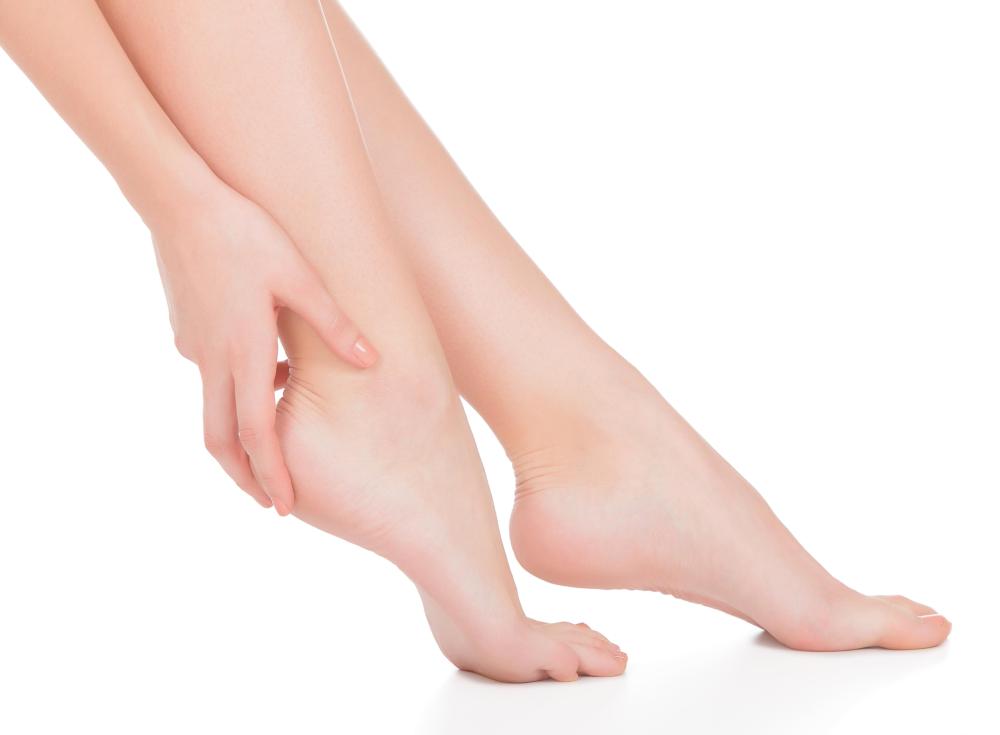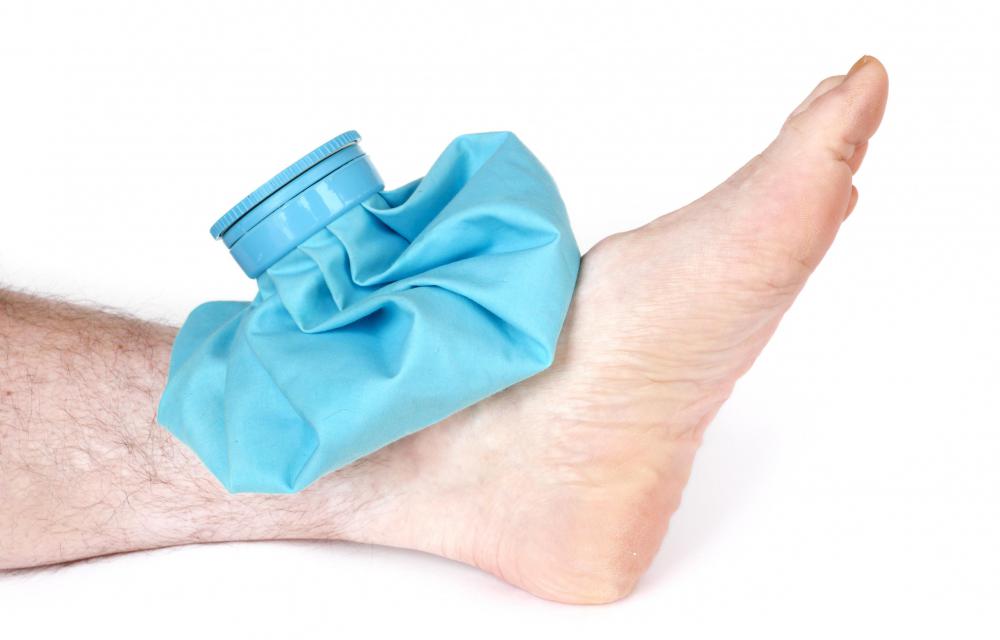At TheHealthBoard, we're committed to delivering accurate, trustworthy information. Our expert-authored content is rigorously fact-checked and sourced from credible authorities. Discover how we uphold the highest standards in providing you with reliable knowledge.
How Do I Treat a Strained Foot?
Treatment for a strained foot may include resting the foot, elevating the foot, and taking a pain reliever. A strained foot can be the result of a fall, over-stretching the muscles or tendons, and twisting the foot. In addition, symptoms of strained foot can be mild or severe, however, treatment generally remains the same regardless of the degree of severity. Moving the strained foot can cause pain, as can exerting weight on it.
Icing a strained foot is one of the most effective treatment options available to reduce pain and swelling. Icing the foot can be done up to six times per day, for 20 minutes at a time. Ice should never come into direct contact with the skin because tissue damage or ice burns can occur. Instead, a pack of frozen vegetables covered with a cloth can be used, as can an ice bag. Icing a strained foot for more than 30 minutes at a time can actually worsen symptoms, and should be avoided.

Taking an over-the-counter anti-inflammatory medication will also help reduce pain and inflammation. Rarely, does a strained foot require the use of prescription pain relievers. If pain is not relieved by using non-prescription medications, however, the health care provider may recommend taking a prescription pain medication. Elevating the injured foot above the heart is also a good way to restore circulation and relieve inflammation. Placing pillows under the affected foot and leg will elevate it and also provide support and comfort.

In addition to pain and swelling, a strained foot may also cause bruising, which typically gets darker, before lightening, over a period of time. A compression wrap can also help improve circulation and relieve pain and swelling. It is important that the compression wrap not be applied too tight, as this can impeded circulation and slow healing. When circulation problems or medical conditions such as diabetes are present, the health care provider can monitor the foot strain for signs of complications or delayed healing.

Occasionally, muscle cramping and spasms can occur as a result of a foot strain. These symptoms are generally mild to moderate in nature, and are usually temporary. If, however, muscle cramps, foot spasms, and severe limitation in range of motion are persistent, the health care provider should be notified. Sometimes, a muscle or tendon tear may render the foot immobile, and in these cases, surgical intervention may be warranted.
AS FEATURED ON:
AS FEATURED ON:














Discuss this Article
Post your comments